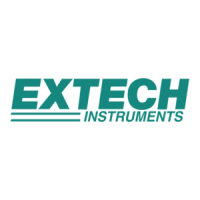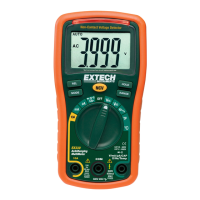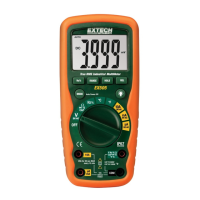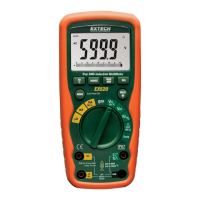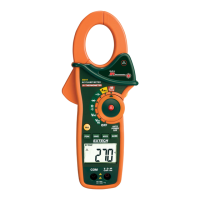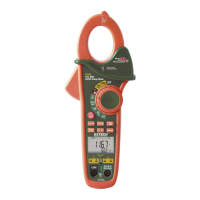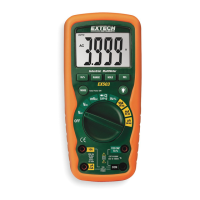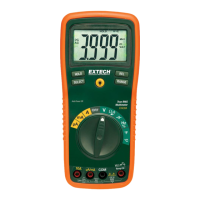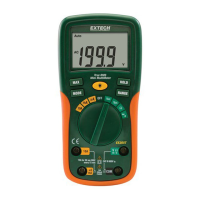8 EC500-en-US_v2.9 7/20
Calibration - Conductivity
Meter accuracy verification should be performed on a periodic basis. Once per month is the
recommended cycle for normal use. If calibration is required, a conductivity standardizing solution
must be obtained. The meter can be calibrated in any or all of the three ranges. Standardizing
solutions of 84µS/cm, 1413µS/cm or 12.88mS/cm (12,880µS/cm) are used for the automatic
calibration recognition procedure. No other calibration values are permitted.
Calibration is always done in conductivity mode. Since salinity and TDS values are calculated from
conductivity values, this procedure also calibrates the salinity and TDS ranges.
1. Fill a sample cup with the standardizing solution.
2. Turn the meter ON and insert the electrode into the solution. Tap or move the electrode in the
sample to dislodge any air bubbles.
3. Press and hold the CAL/RECALL button (approximately 2 seconds) until s in
the lower (temp) display. The main display will start flashing.
4. The meter will automatically recognize and calibrate to the standardizing solution. The display
will brie nd and then return to the measurement mode after a calibration.
5. range ange that is calibrated
during that power on cycle.
Low range, 84µS/cm
Medium range, 1413µS/cm
High range, 12.88mS/cm (12,880µS/cm)
Note: Each time the calibration mode is entered all calibration symbols on the display are cleared,
but only the calibration data for the currently calibrated range is replaced. The other two ranges
keep the existing calibration data, just the symbols are removed. Calibration of all three ranges must
be performed during one power on period for all three range calibration symbols to appear.
See Reset Calibration Data to clear all calibration data from the meter.
Note: The meter allows for a 1, 2 or 3 point calibration. If calibration is done for more than one point
the lowest value standard should be done first to obtain the best accuracy.
Considerations and Techniques
Do not touch the inner surfaces of the conductivity electrodes. Touching the surface of the
platinized electodes may damage and reduce the life of the probe.
Store the electrode in the wetting cap with the sponge moistened with pH 4.01 buffer solution.
Always rinse the electrode in de-ionized water between measurements to avoid cross
contamination of the sample. Double rinsing is recommended when high accuracy is required.
Periodically, accumulated salt deposits from the reference electrode may build up in the
storage cap, and should be rinsed away. These deposits could affect measured values of low
conductivity samples.
When measuring low conductivity samples, extra care is recommended in rinsing the probe to
avoid contamination of the sample with electrolyte from the pH reference electrode. This will
only be a factor when measuring in the low range, and can be further minimized by increasing
the volume of the sample. (Example: Try a 200 to 500 mL sample.)
If the 20mL sample cup is to be used, then the electrode should not be allowed to sit in the
sample for any longer than necessary, to avoid pH electrolyte leakage into the sample, raising
the conductivity value.
w ww. . com
information@itm.com1.800.561.8187
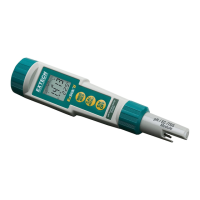
